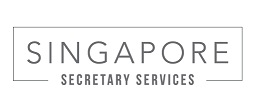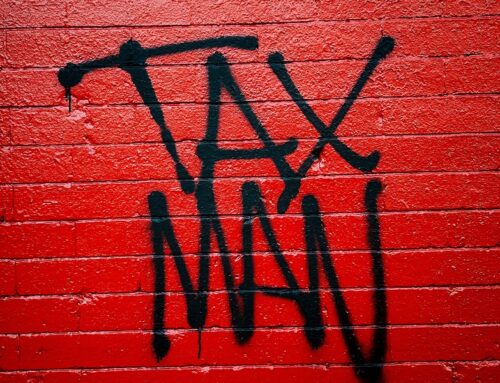There are 2 tax relief schemes that help companies reduce their tax bills. They are:
- The Tax Exemption Scheme for New Start-Up Companies
- The Partial Tax Exemption Scheme
1) The Tax Exemption Scheme for New Start-Up Companies
The Tax Exemption Scheme for New Start-Up Companies will reduce a company’s tax bill greater than the Partial Tax Exemption Scheme. The Tax Exemption Scheme for New Start-Up Companies is granted to qualifying new companies for their first 3 consecutive Years of Assessment from their incorporation.
To qualify, 3 conditions must be satisfied:
- The company must be incorporated in Singapore
- The company must be a tax resident in Singapore for that Year of Assessment (YA)
- The company’s total share capital has to be beneficially held directly by no more than 20 shareholders throughout the basis period of that YA.
– All the shareholders are individuals; or
– At least 1 of the shareholders is an individual holding at least 10% of the company’s issued ordinary shares.
For a company to qualify as a tax resident in Singapore, its control and management of its business is exercised in Singapore for that particular YA.
The Tax Exemption Scheme for New Start-Up Companies is not available to a company whose principal activity is that of Investment Holding or Property Development.
Computation of the first 3 YAs
For computation of the first 3 consecutive YAs, if a particular YA exceeds 365 days, it will be counted as two Years of Assessment.
For example:
If a company is incorporated on the 1st of July 2021 and has its first financial period as 1st July 2021 to 31st December 2022 (18 months instead of 12 months), then this will be the first 3 consecutive Years of Assessment.
Year 1: 1st July 2021 to 31st December 2021
Year 2: 1st January 2022 to 31st December 2022
Year 3: 1st January 2023 to 31st December 2023
This is a total of 913 days.
Alternatively, the company can keep its financial periods as 365 days from the date of incorporation. This will give them a longer period to enjoy the Tax Exemption Scheme for New Start-Up Companies.
For example:
If a company is incorporated on the 1st of July 2022 and has its first financial period as 1st July 2021 to 30th June 2022 (12 months), then this will be the first 3 consecutive Years of Assessment.
Year 1: 1st July 2021 to 30th June 2022
Year 2: 1st July 2022 to 30th June 2023
Year 3: 1st July 2023 to 30th June 2024
This is a total of 1095 days.
This arrangement will maximise the number of days in which the company will qualify as a start-up and consequently be eligible for the Tax Exemption Scheme for New Start-Up Companies.
This is the reason why we usually keep the Financial Year End of New Start-Up Companies to 365 days from the date of incorporation.
Calculation for the tax exemption
The tax exemption is on the first $200,000 of normal chargeable income:
- 75% exemption on the first $100,000 of normal chargeable income; and
- A further 50% exemption on the next $100,000 of normal chargeable income.
(Normal chargeable income refers to income to be taxed at the prevailing corporate tax rate. The prevailing corporate tax rate is 17%.)
Example 1:
The normal chargeable income is $200,000
There is an exemption of $75,000 of the first $100,000 leaving a balance of $25,000
There is a further exemption of $50,000 on the next $100,000 leaving a balance of $50,000
The normal chargeable income after the tax incentive is $75,000
The tax payable is 17% x $75,000 = $12,750
Example 2:
The normal chargeable income is $80,000
There is an exemption of $60,000 of the first $100,000 leaving a balance of $20,000
The normal chargeable income after the tax incentive is $20,000
The tax payable is 17% x $20,000 = $3,400
Example 3:
The normal chargeable income is $150,000
There is an exemption of $75,000 of the first $100,000 leaving a balance of $25,000
There is a further exemption of $25,000 on the next $50,000 leaving a balance of $25,000
The normal chargeable income after the tax incentive is $50,000
The tax payable is 17% x $50,000 = $8,500
Example 4:
The normal chargeable income is $350,000
There is an exemption of $75,000 of the first $100,000 leaving a balance of $25,000
There is a further exemption of $50,000 on the next $100,000 leaving a balance of $50,000
There is no exemption on the next $150,000 above the first $200,000 leaving a balance of $150,000
The normal chargeable income after the tax incentive is $225,000
The tax payable is 17% x $225,000 = $38,250
2) The Partial Tax Exemption Scheme
If the company does not qualify for the Tax Exemption Scheme for New Start-Up Companies, it will fall under the Partial Tax Exemption Scheme.
Calculation for the tax exemption
The tax exemption is on the first $200,000 of normal chargeable income:
- 75% exemption on the first $10,000 of normal chargeable income; and
- A further 50% exemption on the next $190,000 of normal chargeable income.
(Normal chargeable income refers to income to be taxed at the prevailing corporate tax rate. The prevailing corporate tax rate is 17%.)
Example 1:
The normal chargeable income is $200,000
There is an exemption of $7,500 of the first $10,000 leaving a balance of $2,500
There is a further exemption of $95,000 on the next $190,000 leaving a balance of $95,000
The normal chargeable income after the tax incentive is $97,500
The tax payable is 17% x $97,500 = $16,575
Example 2:
The normal chargeable income is $80,000
There is an exemption of $7,500 of the first $10,000 leaving a balance of $2,500
There is a further exemption of $35,000 on the next $70,000 leaving a balance of $35,000
The normal chargeable income after the tax incentive is $37,500
The tax payable is 17% x $37,500 = $6,375
Example 3:
The normal chargeable income is $150,000
There is an exemption of $7,500 of the first $10,000 leaving a balance of $2,500
There is a further exemption of $70,000 on the next $140,000 leaving a balance of $70,000
The normal chargeable income after the tax incentive is $72,500
The tax payable is 17% x $72,500 = $12,325
Example 4:
The normal chargeable income is $350,000
There is an exemption of $7,500 of the first $10,000 leaving a balance of $2,500
There is a further exemption of $95,000 on the next $190,000 leaving a balance of $95,000
There is no exemption on the next $150,000 above the first $200,000 leaving a balance of $150,000
The normal chargeable income after the tax incentive is $247,500
The tax payable is 17% x $247,500 = $42,075
Do remember that all companies need to submit two corporate income tax returns to IRAS every year.
- Estimated Chargeable Income (ECI): To be submitted within three months from the company’s financial year end except for companies which are exempted.
- Corporate Income Tax Returns (Form C-S or Form C): To be submitted by 30th November.
If you have any company-related queries, you may email us at info@singaporesecretaryservices.com. When in doubt, seek legal advice or consult an experienced ACRA Filing Agent.
Yours Sincerely,
The editorial team at Singapore Secretary Services
For more useful articles and videos, visit the Singapore Secretary Services resource page.
If you would like to submit a question or would like us to do an article on certain topics, please email us at info@singaporesecretaryservices.com.
Other related posts:
What is a Double Taxation Avoidance Agreement (DTA)?
How to determine the tax residency of a company
Tax obligations before striking off a company in Singapore
How to file corporate tax returns for companies
What is the difference between Estimated Chargeable Income (ECI) and Corporate Tax Filing?
When are gains from the sale of property, shares and financial instruments taxable?
What are the consequences for late filing or non filing of Corporate Income Tax Returns?







[…] there’s more than just the standard rate. With various tax exemption schemes like the Partial Tax Exemption (PTE) and the Start-Up Tax Exemption (SUTE), your effective tax rate […]